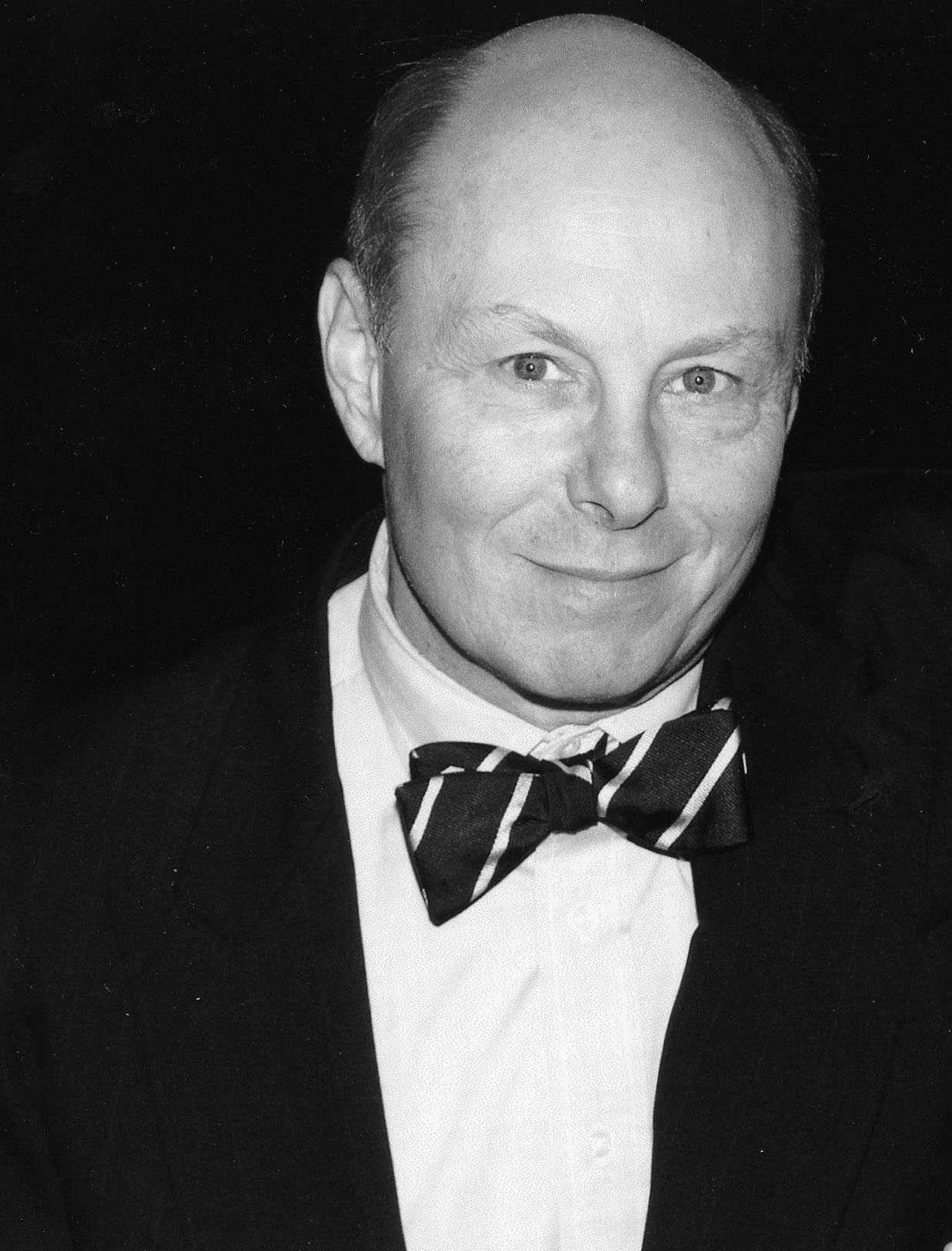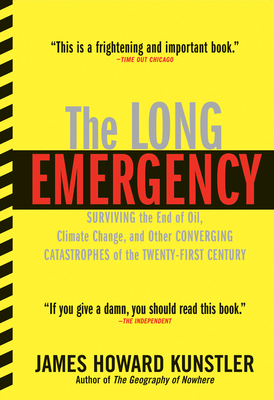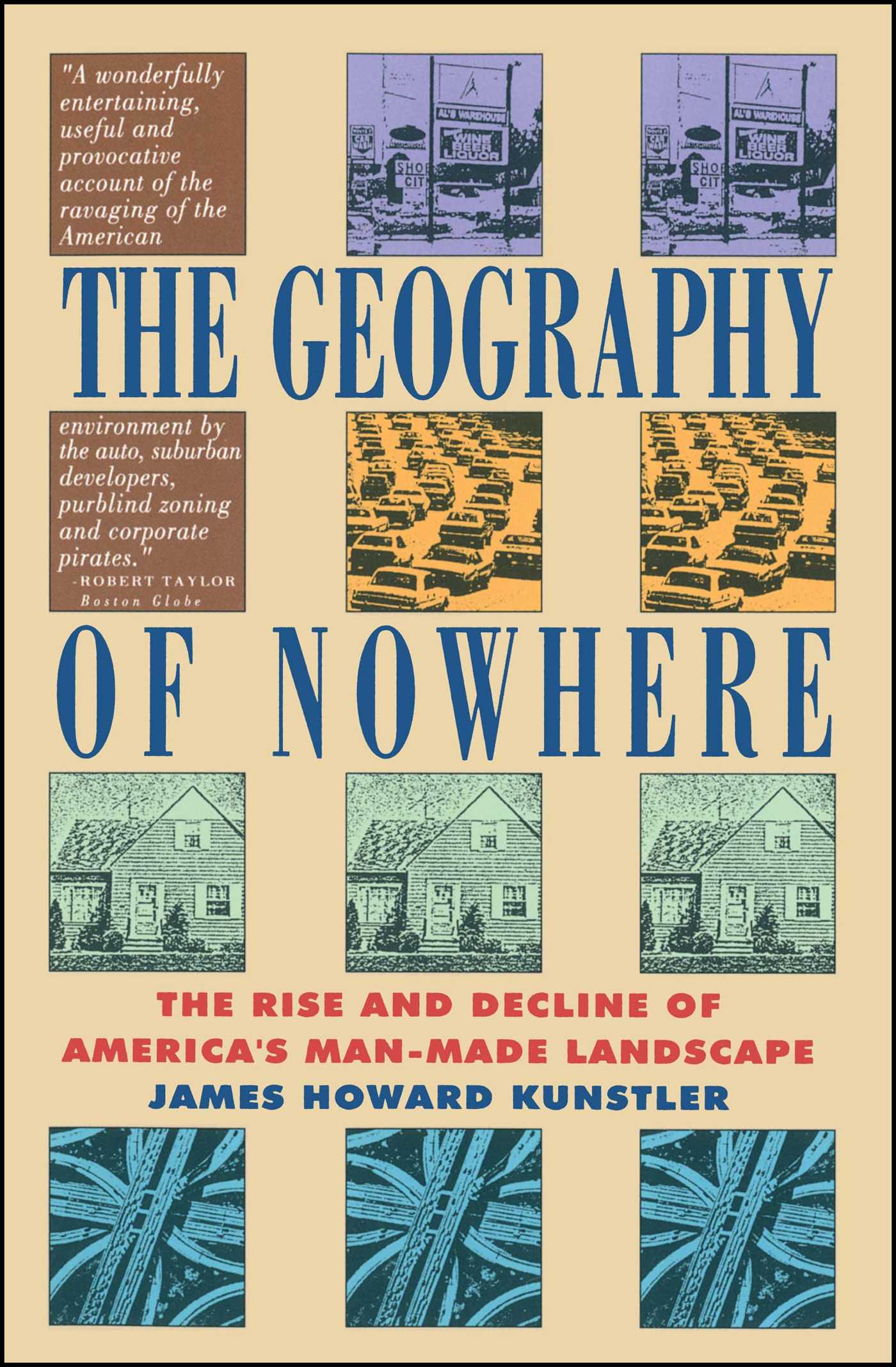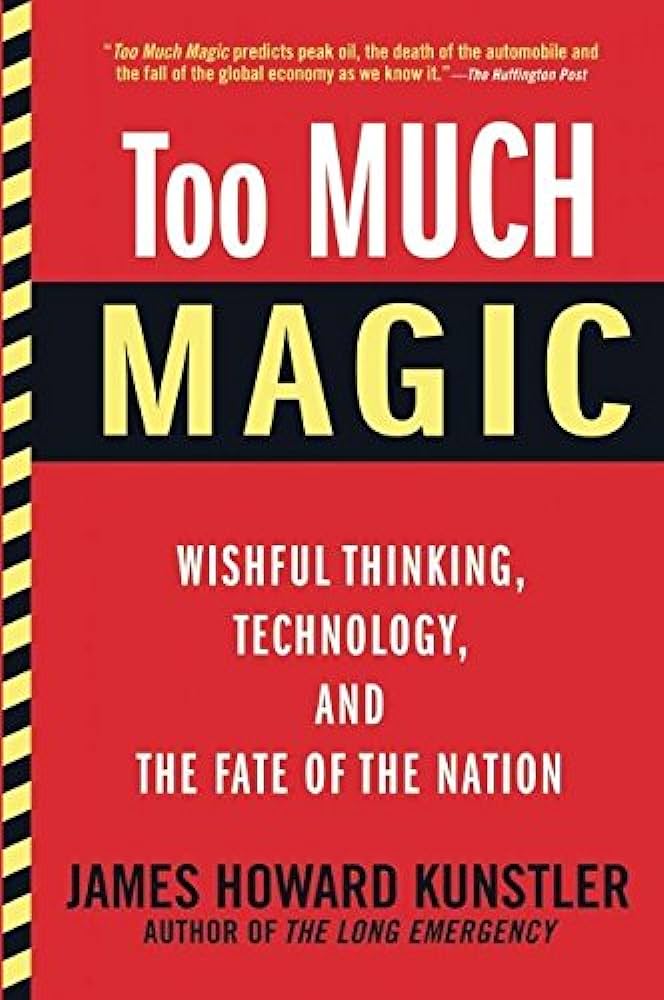
In the ever-evolving tapestry of American landscapes, there are those who possess a unique ability to peer into the future and offer insights that challenge our perceptions of the present. James Howard Kunstler is one such visionary, an American author, social critic, public speaker, and blogger. His thoughts and ideas have long captured the essence of the American environment, prompting us to reevaluate our surroundings and, more importantly, our future.
Mr. Kunstler’s journey to the forefront of societal reflection began with his book, “The Geography of Nowhere,” published in 1994. In it, he delved deep into the history of American suburbia and urban development, presenting a critique of the landscape he saw. As he puts it, “I believe a lot of people share my feelings about the tragic landscape of highway strips, parking lots, housing tracts, mega-malls, junked cities, and ravaged countryside that makes up the everyday environment where most Americans live and work.” It was a clarion call to rethink the spaces we inhabit and the impact they have on our lives.
Over the years, Mr. Kunstler’s work has evolved, reflecting his deep commitment to examining the challenges facing America, particularly in the context of the ‘global oil predicament,’ climate change, and other converging catastrophes of the 21st century. His books, including “The Long Emergency” and “Too Much Magic,” have sparked conversations, garnered both agreement and dissent, and compelled us to consider the consequences of our choices on the environment and society.
Mr. Kunstler has lectured at Harvard, Yale, Columbia, Princeton, Dartmouth, Cornell, MIT, RPI, the University of Virginia and many other colleges, and he has appeared before many professional organizations such as the AIA, the APA and the National Trust for Historic Preservation.
In this interview, we have the privilege of delving into Mr. Kunstler’s mind, exploring the depths of his visionary thinking, and examining the wisdom he has gathered from years of observation and analysis. I acknowledge that not everyone may fully agree with every aspect of his vision, but there are undoubtedly takeaways and reflections we can incorporate into building a better future for our world. His predictions have often been well ahead of his time. His insights offer an opportunity to infuse thoughtfulness into the American landscape and address the environmental challenges we keep talking about and aspire to tackle.
James Howard Kunstler’s thought-provoking ideas can inspire us to reimagine the American landscape for a sustainable future.
James, I’m curious to know if your upbringing or personal experiences influenced your perspective about communities and urban environments. Could you share some insights into your experiences that you believe contributed to your interest in the topics discussed in ‘Geography of Nowhere’?
I grew up in Manhattan, with an interlude — three years, age 5 -8 — in the Long Island Suburbs, and went to summer camp outside a classic New England mill town in New Hampshire, so I experienced three very different ways of life. (Didn’t get to live on a farm.) I was able to evaluate the advantages and shortcomings of each. I have a whole chapter about it in “The Geography of Nowhere.”
What inspired you to write “Geography of Nowhere,” and what specific observations led you to explore America’s man-made landscape?
At age 40, it was clear to me that the suburban mode of land development was destroying our country in every way possible — economically, culturally, spiritually, aesthetically, ecologically, politically. There was a big story there. Nobody else was writing about it — at least not since Lewis Mumford in the early 1960s.
Your book ‘Geography of Nowhere’ was written in 1993, but I’d argue that it’s more relevant now than ever. Why do you think the themes and observations from your book have become even more pertinent in today’s world?
Because we’ve entered the phase of history when the petroleum quandary is kicking in hard, disordering all our accustomed arrangements and destroying their business models. Energy is the key resource and problems with it will ramify and aggravate all the systems we depend on for daily life, from farming to transportation to the way we inhabit the landscape… and the way we conduct every sort of business. It will also deeply affect our social arrangements.



Who did you write your book for, and what do you hope people will gain from it?
The book was written for the general reader… non-experts. But, of course, this was before the Internet when books still mattered. I hoped that my fellow citizens would understand that continuing to build along the suburban template would have ruinous consequence. You can see how it went thirty years later by just looking around the country. We’re entering a state of ruin.
Can you share your thoughts on the concept of ‘new urbanism’ and whether it has made any significant strides in addressing the problems you highlighted in ‘Geography of Nowhere’?
The New Urbanist movement was a significant reaction to the horrible problems caused by a century of suburban sprawl development… which was itself a prime manifestation of our economic romance with petroleum. Of all the movements spawned by techno-industrial modernity, the New Urbanists came up with the most succinctly comprehensive and focused program of remedies, namely traditional urban design based on walkable communities. That would go a long way in preparing ourselves for the rather harsh era post-modernity bearing down on us.
How can individuals and communities take action to combat the negative trends in urban and suburban development that you’ve described?
They would have to adopt an entirely different point-of-view about how human beings might best inhabit the landscape, encode them in coherent principles, and put them into a regulatory framework that is now “occupied” entirely by the suburban sprawl mavens on planning and zoning boards. Or wait for the corrections to occur naturally when the economy tanks and there is no longer any money for suburban type development. At that point, people will build (or rebuild) their neighborhoods by following the emergent mandates of necessity — for instance, if mass motoring goes extinct for one reason or another.
Do you see potential for a shift away from the automobile-centric culture of the United States in the future?
It’s going to happen whether we like it or not. “Happy Motoring,” as the ad agencies called it in the 1950s, is not a permanent installation on the human condition. It happened at a particular moment in history for particular reasons. It seemed like a good idea the time; now, not so much. Now, the sinking middle class can hardly afford to buy cars, especially in the way they’re used to: on installment loans. Far fewer are credit-worthy, and the price of a new car is beyond their reach.
What role does sustainability play in the future of our landscapes, and how can we integrate more sustainable practices into our built environments?
We will be dragged kicking and screaming into new arrangements for daily life. It’s a simple mistake to assume that most communities or polities will prepare for it. Dynamics will change and we’ll be compelled to change with them. All of this follows the law of emergence — history is self-organizing as it rolls out.
As technology continues to advance, how might it affect the design and functionality of our urban spaces, and what challenges and opportunities does this present?
I’m not persuaded that technology will advance in quite the way you’re proposing. Rather, we’re likely headed into a “time out” from technological advance, largely because I doubt we will have a reliable electric grid going forward a few years from now. We’re more likely to be forced by circumstances to revert to more primitive ways of doing things.
What advice would you give to policymakers and urban planners who want to create more vibrant and sustainable communities, especially in light of the challenges posed by climate change and resource scarcity?
My advice would be to study traditional pre-automobile urban form. This is exactly what the New Urbanist movement did starting in the 1980s (and continuing). There is a large body of literature produced by them and their predecessors, and a large body of principle and methodology attached to all that. This is basically the template for walkable communities and cities, the way mankind lived for millennia before cars, trains, and airplanes.
Are there any cities or urban projects that you find inspiring in terms of addressing the issues raised in your book, and what can we learn from them?
Many of the projects of the New Urbanist movement are up-and-running. You can visit them on-the-ground, starting with Seaside, FL, the first iconic project of the movement… Kentlands in Gaithersburg, Maryland, and many many more. The professional organization for the movement is the Congress for the New Urbanism (www.CNU.org). It’s website is a rich source.
You can also visit the age old cities and towns of Europe, almost all of them having districts and neighborhoods built before the automobile and maintaining those older characteristic relationships between buildings and streets.
How do you interpret the decline of traditional malls and increasing store closures in the context of your observations?
Malls, Big Box stores, and related venues represent a way of organizing commerce to maximize profit at a certain point in history – the peak of the oil age. That business model is breaking now. Remember, my general theory of history is: things happen because they seem like a good idea at the time. Then, times change and those ideas don’t look so good anymore. For example, you start a national chain of Big Box hardware stores (e.g. Home Depot). It takes advantage of 12,000-mile supply chains for merchandise from faraway lands. You need proportionately few employees in a giant store where customers must generally find things on their own. Few cashiers. But then, something happens. A national plague of shoplifting starts, due to economic and political conditions. Now, an enormous amount of merchandise is walking out of the store, not paid-for. The business hemorrhages revenue. End of this way of doing business…
We’re also currently witnessing a notable trend of people moving away from urban areas and back to rural environments, often with a renewed interest in farming and sustainable living. How do you view this shift in lifestyle choices, and do you see it as a potential response to the issues you’ve raised in ‘Geography of Nowhere’?
Yeah, yeah… this is a partial misunderstanding of what’s actually happening. The mega-trend is that anything organized on the giant scale is going to wobble and fail – giant retail, giant government, giant universities, giant everything. Our giant cities will be included in this trend. They have achieved a scale that can’t be maintained going forward due to energy problems and capital scarcity. The suburbs, of course, are on their own, somewhat different failure arc. The action is switching to small towns, especially towns in proximity to good farmland and towns on America’s inland waterway system — because that is how goods will be moving when the trucking system fails. Our giant cities occupy important geographical sites. Some kind of human settlement will be there, but the process of contraction is going to be painful and ugly in the medium term.
Considering the cultural and environmental impacts of fast food and restaurant chains on our landscape, do you foresee a potential transformation in the coming decades where the prevalence of such establishments might slow down or even minimize given the growing awareness of food and health? How might this affect urban planning?
They are already dead, they just don’t know it. It was a mode of organizing restaurants that seemed like a good idea at the time (circa 1960). Times have changed. Don’t waste any time trying imagine their fate, beyond salvaging the materials in the burger huts.
Smart cities are gaining traction as a way to address some of the challenges in urban development. How do you view the concept of smart cities?
“Smart cities” is a term co-opted by the World Economic Forum (WEF) from earlier versions of the Walkable City and Traditional Neighborhood as developed by the New Urbanist movement starting in the 1990s. The WEF’s “smart city” is a con. It’s about control and surveillance, not comfortable urban life. They have successfully corrupted the whole dialogue over urban form.
In any case, the model to look to now is the small town and the small city. Fuggeddabowt the big cities.
Flying cars have been a futuristic concept for decades. They’ve been approved and are expected to be available in 2025. What are your thoughts on the introduction of flying cars and their potential impact on landscapes and transportation systems?
Fuggeddabowt that too. Ain’t gonna happen. We’re going medieval, so to speak. I suggest people think about the mule business.
Your book ‘Geography of Nowhere’ has been instrumental in highlighting the issues surrounding the development of America’s landscape and cities. Any advice on how people can become more observant and aware of ongoing changes in their communities and environments, and why do you believe such awareness is important for the future?
Yes, Pay close attention to my later books, The Long Emergency and Too Much Magic; Wishful Thinking, Technology, and the Fate of the Nation. We are facing a kind of serious collapse. Yet we are consumed with techno-narcissist fantasies. American life will self-reorganize emergently from this mess, according to what circumstances make available to us — which will be neither high tech, nor theoretical.
In closing, can you share your vision for the future of American landscapes? Looking ahead, what changes do you foresee in the American landscape in the coming decades, and what must shift to bring about positive change?
I expect American landscapes will recover from the insults of the past 250 years, but the human imprint on it will be much smaller and more primitive. Most professionals involved in these issues do not have a fucking clue what we’re in for. Just sayin’.